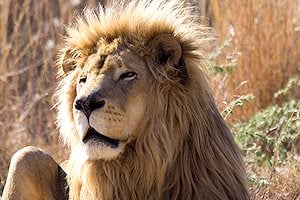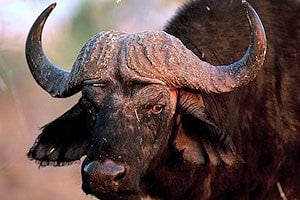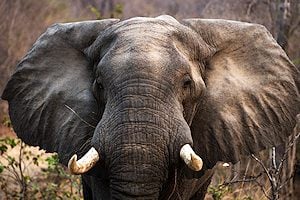- USD
- EUR
- GBP
- AUD
- CAD
- ZAR
The striped polecat resembles the North American skunk and shares its pungent defenses. Their distribution in Southern Africa is extensive.
Need Advice?These animals are striped black, sometimes a dark brown depending on environmental factors, and white from their head to their long and bushy tail.

The range of the striped polecat within Africa is extensive. Their range starts in Ethiopia and Somalia on the east coast of Africa and continues to South Africa. The Sahara Desert and Congo Rainforest, along with the Skeleton Coast in Namibia, are the only areas where they don't occur.

Their wide distribution in over 40 African countries, their very healthy populations, and their difficulty to trap or hunt make them top candidates for the least concern list. They can inhabit altitudes up to 4000 meters above sea level, which means they occur in most areas within their distribution range. Threats to this species only include hunting when they threaten and pester the poultry livestock populations of rural settlements. The only thing known about their population is that it is stable. Estimates are absent in recent studies.

All they need in a habitat is a steady food supply, which usually means insects, although they are carnivorous and sometimes hunt smaller mammals and livestock. Open grasslands, savanna areas, woodlands, forests, deserts, and rocky or semi-mountainous areas offer suitable habitats. They occur in agricultural areas, including croplands and plantations like those found in KwaZulu-Natal.

Striped Polecats are solitary animals with exceptions during mating season and when mothers care for their young. Males are completely solitary outside of mating season. When two males come into contact, this interaction is most frequently very hostile and violent, where one of the two walks off with an injury of some kind or another.
We recommend the following National Parks and Private Reserves for the best chances of spotting the striped polecat on safari game drives and bush walks.

They are some of the most vocal small animals in the Kruger National Park. Their calls range from a quiet growling sound when warning off predators to a short low-amplitude call used for greeting one another and other sounds related to distress, mating, submission, and aggression. They also scent-mark their territory and display different postures under various circumstances.

Reproduction usually occurs shortly before summer, during September, October, and November. It is to ensure offspring are born during the summer when conditions are favorable and survival of the young is more likely. After a female falls pregnant, it takes roughly four weeks before she gives birth. During that time, she prepares a nest for her young. Litter size ranges from 1 to 5, although a mother can support up to 6 young with her six milk-producing breasts. At birth, the young Polecats are very vulnerable and unable to use many senses.

Domesticated dogs in agricultural areas, or jackals and smaller cat species, are their main enemies. Striped Polecats are much more intelligent than most animals when dodging predation. They try to prevent conflict by randomly changing course while foraging. When threatened, they can defend themselves with an extraordinary power they share with their continental skunk cousins, a strong odor they spray from behind. It can distract and even fend off many predators in a dire situation.





This website uses cookies. To learn more about how we use cookies, please view our Privacy Policy. By clicking "I Accept" on this banner, you consent to the use of cookies unless you have disabled them.





